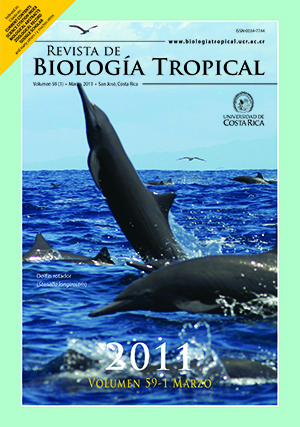Abstract
The mangrove oyster Crassostrea rhizophorae is important fishery resource along the entire Brasilian coast with excellent potential for marine culture. The purpose of this paper was to examine the reproductive characteristics of the oysterof the Maraú river estuary in Camamu Bay, Bahia, Brasil. The samples were collected monthly, from September 2006 to August 2007, at two points (I and II) in Camamu Bay. At each site 20 oysters were collected for histological analysis, fixed in Davidson’s solution, embedded in paraffin, dehydrated in an ethanol series, sectioned (7μm thick) and stained with Harris hematoxylin and Eosin (HE). Additionally, 30 oysters were sampled, at each point, for a condition index analysis. The water temperature ranged from 23.5°C to 30°C and the salinity from 15 to 25 ups at Point I (Maraú) and from 25 to 35 at Point II (Tanque Island). The oyster’s height ranged from 30 to 92mm at Point I and from 27 to 102mm at Point II, with an average of 49.0mm±9.1 (n=230) and 49.9mm±9.9 (n=237), respectively. Among the sampled oysters at Point I, 59.1% were females, 31.3% males, 1.3% hermaphrodites and 8.2% of the oysters of undetermined sex. At Point II, 66.2% were females, 30.4% males, 0.8% hermaphrodites and 2.5% (n=237) of undetermined sex. The gonadic stage analysis indicated that the reproduction period of the C. rhizophorae in the Maraú Peninsula was continuous all year, without any regressive phase. The condition index (R) ranged from 8.0% to 17.7%. The peak periods of R coincided with the expressive oyster’s percentage in the maturation and liberation gametic stages. The results of these findings will contribute information for the oyster spat collection and to the process installation of the oyster culture in Camamu Bay.
##plugins.facebook.comentarios##

This work is licensed under a Creative Commons Attribution 4.0 International License.
Copyright (c) 2011 Revista de Biología Tropical






